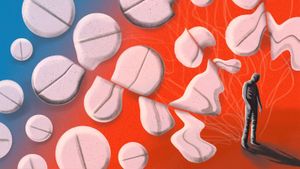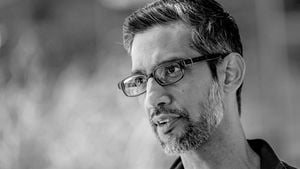North Adams, Massachusetts, has recently embraced yoga as an integral part of its public school system, marking a significant shift not just for educators but for students as well. The initiative, spearheaded by Superintendent Barbara Malkas, aims to address the lingering social and emotional challenges faced by students since the pandemic, and leverage yoga as both a therapeutic and educational tool.
With the winds of change blowing through the North Adams Public Schools, Malkas often dedicates her mornings to educate her staff about yoga and its benefits. Partnering with the nonprofit organization Breathe for Change, which specializes in integrating yoga and social-emotional learning practices within educational frameworks, she has transformed what was once just her personal passion for yoga during the pandemic, 2020, to something much larger. “So, this program starts with the educator as the facilitator because it’s just like in medical practice, if we don’t heal ourselves, how can we heal others?” says Malkas, underscoring the importance of self-care for teachers.
The initiative has gained traction with many educators participating and becoming certified yoga instructors. So far, more than 40 teachers have joined forces with Malkas, each contributing their unique flair to the incorporation of yoga and mindfulness within their classrooms. This professional development effort was not just about personal growth; it was also about equipping these educators with tools to cultivate social-emotional learning among their students.
Megan Gorton, who teaches third-grade English Language Arts and Social Studies, has observed noticeable changes among her students. “Even the kids will say, like, they start out and some of them are like, 'I just really wasn’t feeling it today.' One of the kids told me he was feeling out of control, and by the end of our yoga, he said he felt relaxed and calm,” reflects Gorton, sharing the positive impact yoga has had on her classroom atmosphere. It is clear from her sentiments and those of her colleagues: the blend of physical activity with mindfulness helps create more calm and focused students.
Not only does Gorton lead yoga practices, but teachers like Staci Lazzari, the music instructor, have also taken up the mantle of incorporating mindful movement exercises. She employs a choice board at the beginning of her classes, allowing students to select from various calming techniques. “When we are able to help our students by giving them resources and tools, it helps them focus—it helps them redirect and reengage,” states Lazzari.
While each classroom takes on its own unique flavor, the common thread running through these initiatives is the palpable enhancement of classroom dynamics. A survey conducted within the district revealed promising results; many teachers noted they hadn't faced significant discipline issues in their classrooms for more than a year. This is not merely coincidental; the yoga practices are helping students self-regulate their behaviors better. Educators are finding innovative methods to allow children to express their feelings and manage their impulses, providing them with invaluable life skills.
The programs are also extending beyond the school walls. Community classes facilitated by these trained teachers are popping up, drawing interest from parents and local residents. Leslie Appleget, North Adams' District Arts Integration Specialist, is one of the key facilitators of these community yoga classes. Recently, she led a class at the North Adams Public Library, demonstrating how the spirit of unity and wellness can surpass school boundaries. This community engagement fosters connections and provides participants, young and old, with tools to manage stress and build resilience together.
Interestingly enough, the origins of this initiative can be traced back to Malkas's personal quest for wellness amid the chaos of teaching during the pandemic. Her initial Friday yoga gatherings for colleagues encouraged many educators to explore their certifications. It wasn’t long before these budding yoga instructors realized the benefits of yoga were translatable to their teaching methods. “When you notice the difference it makes for you, and you feel it in your body, you’re like, ‘I need to figure out how to do this in my classroom,’” reflects Malkas on the organic emergence of enthusiasm among her staff.
The North Adams Public Schools yoga program is unique not only for its push to integrate mindfulness but also for the strong support it has from district leaders. The commitment from school administrators signals recognition of the critical role social-emotional learning plays, especially following the pandemic. Students are re-learning how to interact and communicate with each other, skills they sorely missed during those isolative months.
"So many children are struggling socially after the pandemic,” Malkas states, emphasizing the need for such programs. The blending of yoga and traditional education plays almost like music, harmonizing to create not just better students but more well-rounded individuals equipped for life outside of school.
Such efforts are not limited to North Adams. Schools nationwide are beginning to recognize the potential benefits of incorporating holistic practices like yoga, mindfulness, and emotional learning strategies. The North Adams initiative is merely one of many examples highlighting how educators are evolving to meet the challenges of modern teaching, demonstrating resilience and creativity.
Throughout North Adams, the scene is simply inspiring: students arrive at school with the normal stresses of childhood but now have these tools available right from the get-go. They engage with calming practices instead of jumping straight to academics, taking just two minutes to breathe and let go before becoming immersed in learning. This powerful but simple act of pausing can change everything for these young individuals. For once, students can have space to breathe, literally and figuratively, and it makes all the difference.
The transformation witnessed once the calming practices are employed speaks volumes about their necessity. Students are starting their classes grounded and ready to engage, providing their teachers with brighter and more focused minds to work with.
But what happens when choosing yoga isn't appealing for everyone? Malkas and her team understand this concern; not every student enjoys yoga or feels comfortable participating. To cultivate this inclusivity, students are always provided with alternatives; participating is never mandated. The ultimate goal is to meet each child where they are, allowing them to select activities they feel comfortable with and engage at their own pace.
This initiative, now gaining momentum, is expected to create ripples throughout the educational framework, spotlighting the importance of mental wellness and caring practices. The excitement within the community continues to grow as they see evidence of its positive influence. Teachers, parents, and students alike are coming together to advocate for mental wellness, and the North Adams Public Schools are at the forefront of this action. With innovative programming like this, the future seems brighter for the children of North Adams. Their approach to education is evolving, prioritizing emotional health hand-in-hand with academic achievement.



